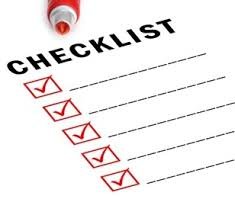Checklist for Audit in Liquid Production

Liquid Production Audit Checklist
1. Facility & Environment
-
Production area designed as per GMP (segregated zones, unidirectional flow).
-
Cleaning and sanitization records of manufacturing & filling areas available.
-
Air Handling Units (AHUs) qualification and filter integrity test records.
-
Temperature, humidity, and differential pressure monitoring records.
-
Pest control records for production area.
2. Equipment & Utilities
-
Equipment qualification (IQ/OQ/PQ) records available.
-
Preventive maintenance and calibration records updated.
-
Cleaning and line clearance documented before and after use.
-
Purified Water (PW) / Water for Injection (WFI) system validation and monitoring records.
-
Utilities (compressed air, nitrogen, steam) quality monitored.
3. Raw Material Handling
-
Dispensing done in controlled environment with line clearance.
-
Materials issued as per approved batch manufacturing record (BMR).
-
Raw materials properly labeled (Quarantine/Approved/Rejected).
-
Balances calibrated and used with logs.
4. Manufacturing Process
-
BMR available, approved, and followed step-by-step.
-
In-process checks (pH, viscosity, volume, weight, clarity) recorded.
-
Mixing time, temperature, and speed documented.
-
Control over addition of active pharmaceutical ingredients (APIs) and excipients.
-
Cross-contamination prevention measures implemented.
5. Filtration & Filling
-
Filtration records (filter integrity test, sterilization records if sterile liquids).
-
Filling area classified and maintained (Grade A/B if sterile).
-
Line clearance before filling documented.
-
Volume/weight checks during filling documented.
-
Container/closure integrity checks performed.
6. Packaging & Labeling
-
Labels reconciled and controlled under SOP.
-
Packaging line clearance records available.
-
Verification of correct batch coding and expiry date.
-
Container integrity (leak test, torque test for bottles) performed.
7. Documentation & Record Keeping
-
Master Formula Records (MFR) and BMR controlled.
-
Logbooks of equipment updated contemporaneously.
-
Deviations/OOS/OOT properly documented and investigated.
-
Yield reconciliation performed at every stage.
-
Batch release only by QA approval.
8. Personnel & Training
-
Gowning procedures followed and monitored.
-
Training records available for operators and supervisors.
-
Personnel hygiene monitored (medical checks, health status).
-
Access control for sensitive areas (filling, sterile production).
9. Quality Control Integration
-
In-process samples tested and results available.
-
Finished product testing records available before batch release.
-
Retention samples stored properly.
-
Stability samples pulled and tested as per stability protocol.
10. Safety & Compliance
-
MSDS available for all raw materials and solvents.
-
Spill management SOPs in place.
-
Fire safety and emergency exits available and accessible.
-
Compliance with GMP, WHO, USFDA, EMA, and local regulations.
🎓 Discover one of the best Complete Pharmaceutical Quality Assurance Course available —click below to explore the course that’s shaping future in QA Course skills.

